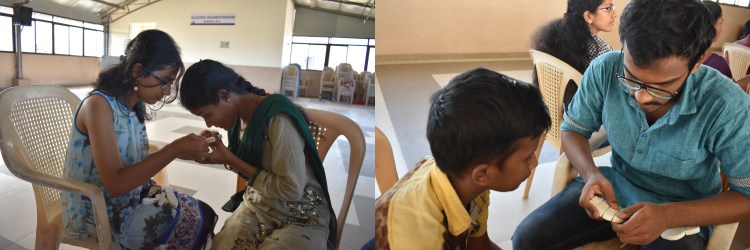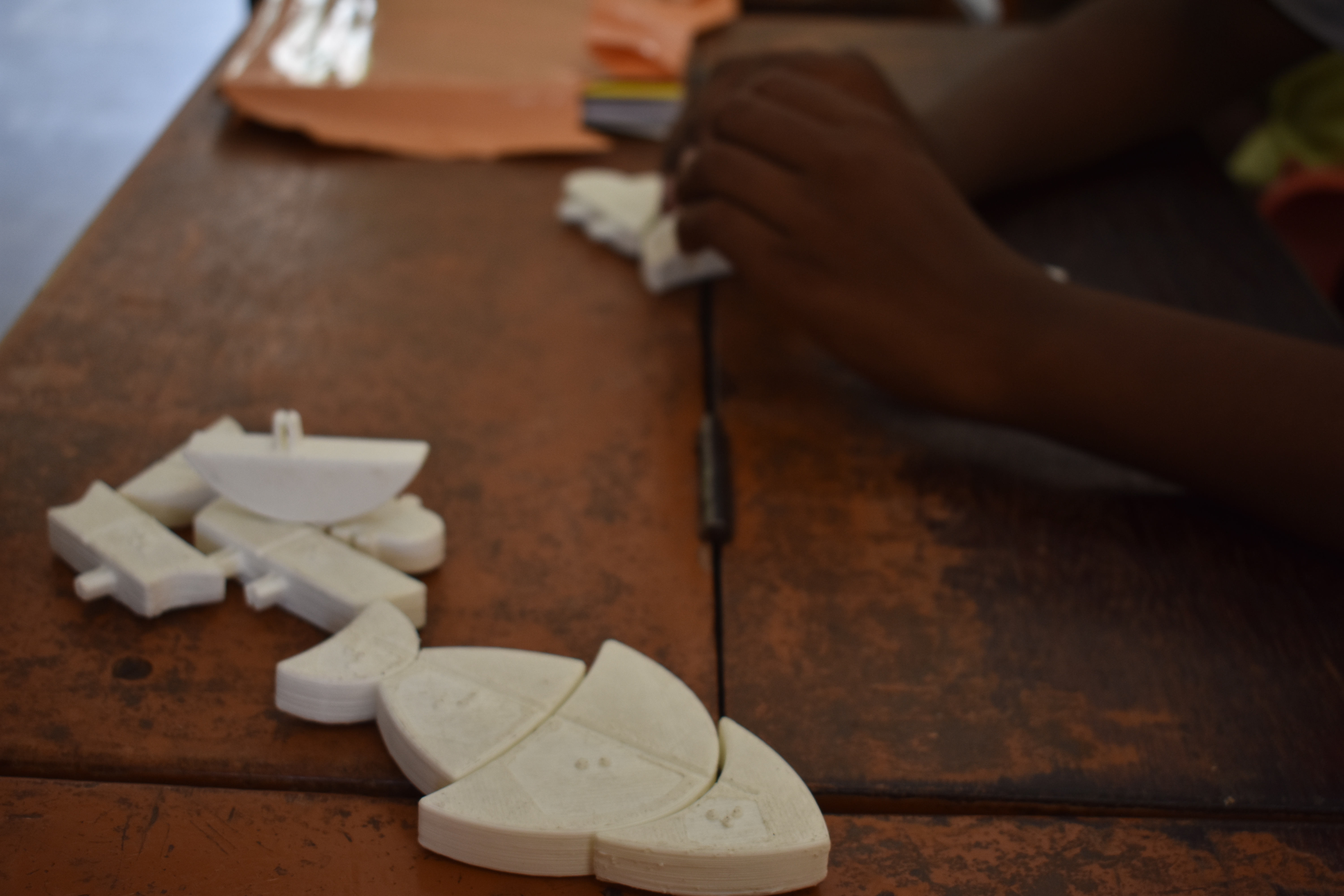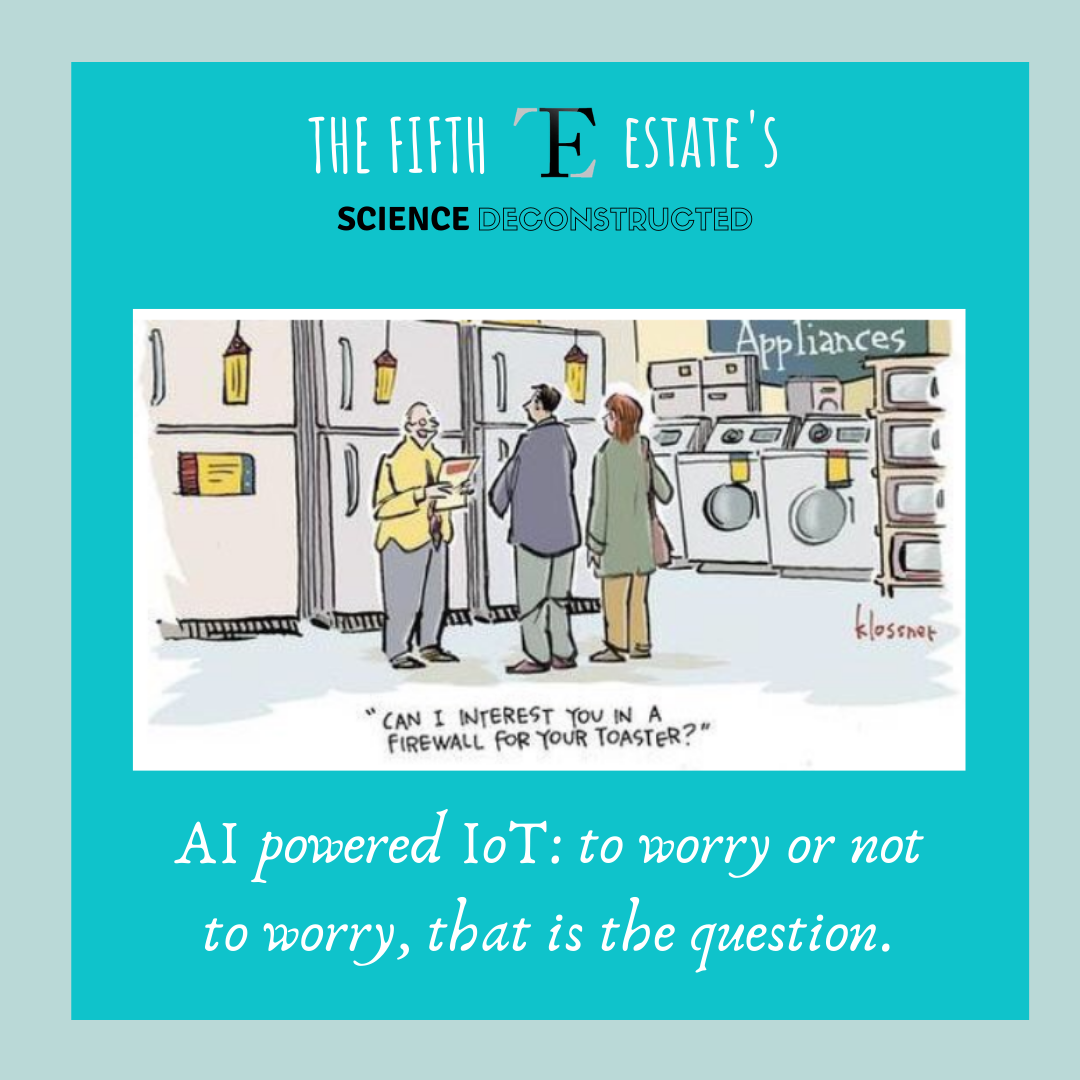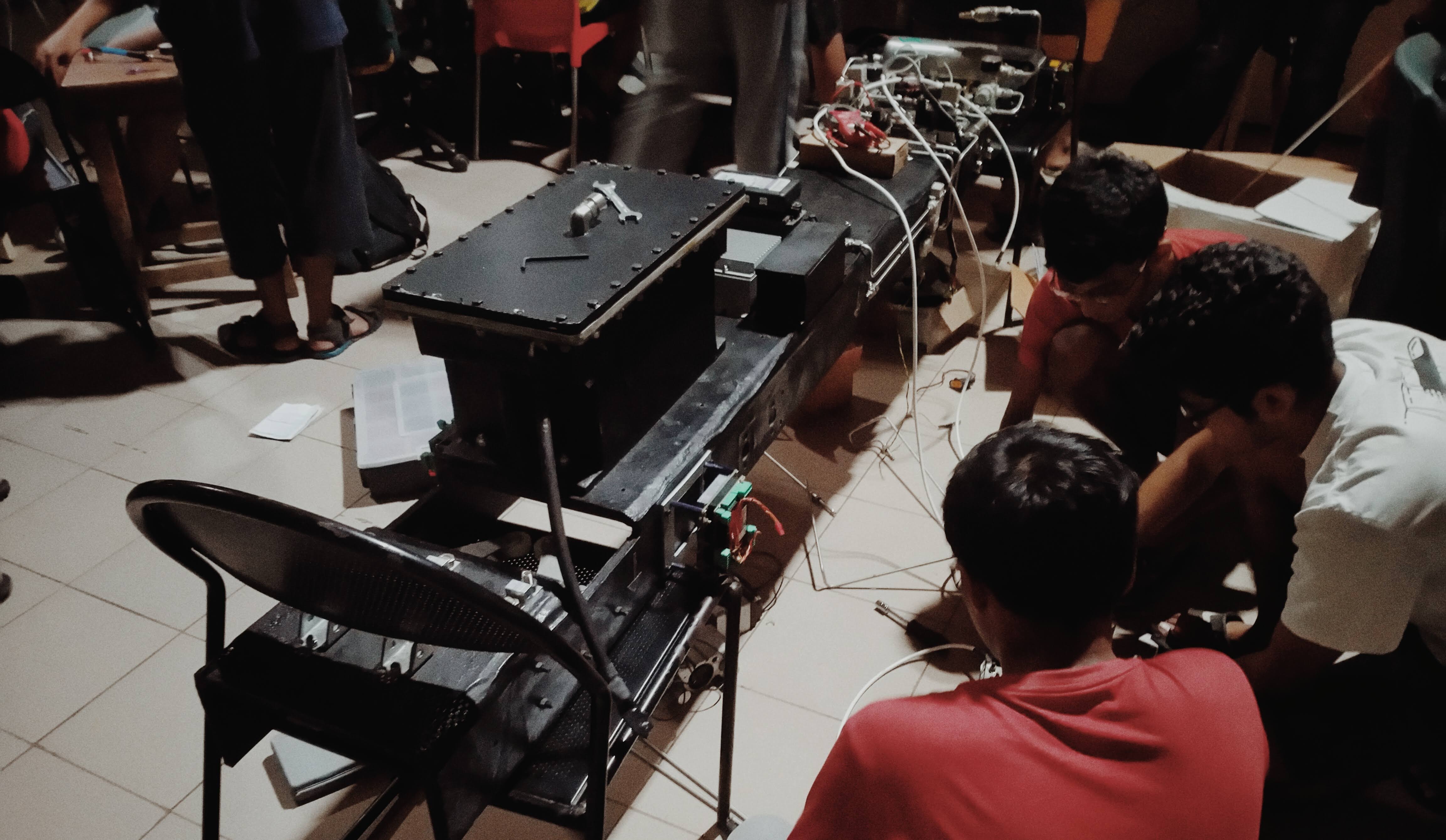Social campaigns became a part of Shaastra in 2012 as a way of giving back to society. However, a separate team to serve the purpose was conceived only in 2016.
Team Endeavour took shape when Pledge-A-Book, Shaastra’s literacy campaign, garnered some great success and hinted to the people that Shaastra’s social campaigns could grow larger than we thought, provided we poured in more efforts. Initially, the team consisted of 15 members: much higher than the current strength of 9. Over the years, Shaastra realised that a large team in this context was harder to coordinate. Also, Team Endeavour is one that sees delayed results, as the social campaign needs time to leap off the ideation desk and change lives. There are no immediate rewards and no instant feedback, which makes staying motivated a challenge. A smaller and tighter team made more sense here.
This year, Team Endeavour takes up BLINK, an initiative aimed at helping the blind. While we’ve all heard of many entities trying to impact the lives of the blind through awareness campaigns, donations, and whatnot, BLINK is taking a less common route.
Apart from raising awareness and trying to obtain donations, BLINK creates toys. Those that don’t need you to see them to be able to effectively play with them.
“We were split into 3 equal groups and assigned one topic to each group to gather ideas under during the summer. We came up with campaigns on reusable sanitary pads, circular economy, and 3D-printed educational Braille toys for the blind. The cores appended to this list some child cancer awareness campaign ideas,” recollects Nithish, Endeavour Coordinator. The team now sat with a soup of ideas, and a choice had to be made. Eventually, after loads of debate (“and swearing at each other,” he says), they settled on the idea of 3D-printed toys, because it was feasible and they could focus more on the impact than the intricacies of implementation, and that’s how BLINK came to be.
While the other campaign ideas were great as well, they were harder to materialise. For example, the team decided against 3D-printed water filters because of harder-to-implement health standards and other potential risks. The sanitary pads idea had a plethora of issues: health concerns, heavy reliance on NGOs for implementation, and even having to change the mindset of people regarding menstruation and the taboos surrounding it.
The Story of BLINK
“Soon after finalising the campaign, the first thing that hit us was the realisation that it’s pretty small. The Cores and PR Executives had several meetings to try and expand it, and it wasn’t until August that the campaign began in full swing,” says Surya, Sponsorship and PR Core, Shaastra 2020.
And so, after the primary feasibility check to answer the “how”s and “where”s of printing the toys, began the foundations of eye donation stalls, workshops, and career development programmes. The team reached out to professionals to conduct workshops in schools across Chennai in the fields of drama, self-defence, and dance, among others. Professional orchestras were invited to Insti in a step to raise awareness. (Yes, the musicians were all blind!) Career development programmes were to inform blind people about the opportunities they can avail, and to provide them a platform to voice their ideas, thoughts, and goals. The ultimate goal with all of this was social inclusion: to boost their confidence in the fact that they can do just as much as any of us and discard their inhibitions!

Team members helping out the blind children with the BLINK toys
“Initially, we weren’t seeing great progress on the toys. Printing stopping midway due to overheating was one of the problems we faced. We ended up having to modify the design: trying to reduce thickness to reduce material usage in a move to combat the heating issue. Fortunately, it worked out,” admits Bharat, PR Executive, Shaastra 2020. “We have found saviours in the Engineering Design Department’s 3D-printing lab. Their technical assistance with the printing and the material is something we’re very grateful for. Their help also allowed us to cut down on costs: toys would have otherwise costed 700 rupees a piece! Printing in the lab cost us only as much as the material.”
The team tried their first “successful” toys in schools, and received feedback from them and from Insti’s own blind students as well. They then modified their designs accordingly: little tweaks like increasing height or adding a new physical part to a toy to make them better suited for the users.
After their plans for various programmes were in place and the schools were visited, the Endeavour team finalised associations with NGOs around mid-September.
The addition of an NGO adds huge value in terms of impact. Not only can the Endeavour team do more in the months leading up to Shaastra, but also the campaign can live on even after Shaastra if the NGO offers to take it up and continue impacting lives! This has happened in the past with Pledge-A-Book and SYNK (a social campaign that revolved around recycling plastic bottles to build benches), for example.
It was now time to let Insti know what Endeavour was up to! The team reached out to artists on social media to spread the word about BLINK, and even posted on social media themselves. But the most memorable of these shenanigans played out on one regular day at the OAT, when the movie went black a minute before the interval, while the audio continued to play. Naturally, there were hoots of annoyance from the unsuspecting audience, that is, until a thought-provoking message showed up on the screen.
“You experienced darkness for a mere 15 seconds. Imagine the people that can’t see,” the pitch-black screen read.
Those who shouted angrily a few seconds ago now applauded heartily, and the incident went viral in the campus in no time. Eye donation stalls were set up outside the OAT after the movie, and the team received a hundred forms. They also took the opportunity to speak to people and shatter common myths about eye donation, one of them being the removal of the entire eyeball from eye donors (which isn’t what happens in reality).

The team collecting eye donation forms at the OAT
A week after this, the campaign launch happened. After looking for and inviting the chief guests, the team invited blind kids for the event from the schools they had visited. The campaign launch was followed by some fun inclusion activities. There was blind chess and even blind cricket, and any Insti student who wanted to join in had to do so blindfolded!
The Impact
“Well, the schools are still using the toys everyday! Regular toys can’t be enjoyed by the blind kids: they usually resort to mostly playing chess and listening to audio books for entertainment. Giving them something interactive made them visibly happy. We even got to witness peer learning! If someone knew Braille well, he’d teach the others around them,” says Bharat. “We continue to receive regular feedback on how to improve the toys.”
“That was about the toys. For eye donation, we have received over 200 pledges,” adds Nithish.
“We’ve also managed to reach out to the less economically fortunate. We’ve conducted a free eye screening session, and even handed out free spectacles!” says Uma, PR Executive.
The Team’s Experience

Team Endeavour with the Chief Guests at the BLINK Campaign Launch
Giving us the coordinator perspective, Nithish says, “It has been demanding to make BLINK happen. The Cores kept pushing us to get stuff done, but we understand that it was for the betterment of the campaign. The schools we wanted to visit were very far, and the journeys ended up being long and tiring. The silver lining to all this, though, was the opportunity that we got as a team to bond. We all made great friends as we worked. When we finally got to the schools, our excitement recovered when we saw the kids full of life, eager to check out what we had in store for them.”
“It’s very fulfilling to see an event that you planned pan out neatly. The OAT success was a big boost to the team. When people started shouting right before the interval, that’s exactly what we wanted! Most of our events have been successful and we’ve had a great year with this campaign,” says Uma.
“The experience has been lots of fun while being lots of work too. There have surely been times when I didn’t like being a PR Executive: I’ve had to spend all my time on WhatsApp, for instance. But I’ll say it was worth all the feels of working with these people. Also, the campaign was very successful. As I mentioned earlier, the kids are using the toys everyday. The upcoming career development workshops promise to help out the blind,” adds Bharat.
“From a point where we felt like we had to go with a backup idea, to where we’ve reached now with BLINK, it’s been a great journey. We were able to start in September and the fact that we’ve been able to achieve solid results by December is great. The experience of hanging out with the team and staying up late nights while also guiding them is something. There was a point around October when the team felt like they were fully saturated with work, and it looked hard to progress from there, but the fact that we’ve been able to overcome that is something that I’m proud of,” says Surya.
BLINK will be setting up a stall in KV Grounds, where they are planning to receive eye donation forms, spread the word about their efforts, and engage people in blindfolded games and activities. They are also scheduling their Career Development Workshop for Blind People to happen at Shaastra. If you wish to commend their efforts or learn more about the campaign, catch the team members during Shaastra!




